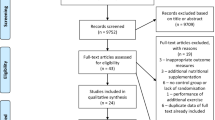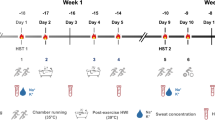Summary
It is the normal pattern for the Bantu to gain about 2.7 kg in weight during the first month of his service on the mines. This is because the mines provide an excellent and well-balanced diet, which supplies 136 gm/man/day of protein, of which 65 g are from animal origin, and 4000 cal/man/day. This is very different from the diet they enjoy in the Bantu homelands, where they also rarely do regular physical work. On the mines they work for 6 days at a moderate rate of work. The regular work and good diet results in the Bantu gaining in weight and in an increase in his maximum oxygen intake from 2.32 to 2.79 l/min. Both these increases are significant.
The nutritional and exercise background of the young South African Caucasian is very much different. At home, in the school and during their military training these factors are well catered for.
While the Bantu gains in weight and increases his maximum oxygen intake, the young Caucasian does not gain either in weight or maximum oxygen intake during 6 months of his military training. By comparison, therefore, the young Caucasian in South Africa is in a good nutritional state and is fit for endurance effort, while the Bantu lacks both of these in his homelands, but rapidly gains in both during the first few months of his contract on the mines.
Similar content being viewed by others
References
Buskirk, F., andH. L. Taylor: Oxygen intake and body composition. J. appl. Physiol.11, 72–78 (1957).
Fleming, P. W.: Some aspects of nutrition in the gold mining industry. Research Report No. 55/65, Chamber of Mines. Johannesburg 1965.
Ward, J. S., andP. W. Fleming: Change in body weights and body composition in African mine recruits. Ergonomics7, 83–90 (1964).
Wyndham C. H., W. v. D. M.Bouwer, M. G.Devine, and H. E.Paterson: Preliminary observations of the effects of high air temperatures on Bantu labourers. Report to Consulting Engineer, Rand Mines Ltd. Johannesburg 1951.
- and W. P.Leary: The effect of medium altitude on exercise physiology. S. Afr. Med. J. (In print).
- - C. G.Williams, M. I.Watson, and A. H.Munro: Improving the accuracy of prediction of an individual's maximum oxygen intake. Research Report No. 3/66, Chamber of Mines. Johannesburg 1966.
—,N. B. Strydom, J. F. Morrison, J. Peter, J. S. Maritz, andJ. S. Ward: Influence of a stable diet and regular work on body weight and capacity for exercise of African mine recruits. Ergonomics5, 435–444 (1962).
Author information
Authors and Affiliations
Rights and permissions
About this article
Cite this article
Wyndham, C.H., Strydom, N.B., Leary, W.P. et al. Studies of the maximum capacity of men for physical effort. Int. Z. Angew. Physiol. Einschl. Arbeitsphysiol. 22, 304–310 (1966). https://doi.org/10.1007/BF00698282
Received:
Issue Date:
DOI: https://doi.org/10.1007/BF00698282




